
Wouldn't it be great to create a vibrant corporate blog capable of driving meaningful social engagement with your prospects? Marketo has done a fantastic job of this, so I decided to jump in and see what lessons can be learned from their success.
1. Marketo Hired Pros - Their Posts Did Best
Turns out professional content marketers are pretty good at content marketing. At Marketo, team members whose job it was to think about content marketing all day had the highest average number of shares per post of any Marketo employees, over 42% higher than the next internal group of authors.
2. Posts by Junior Team Members Achieved 51% More Avg. Shares than Those Authored by Marketo Executives
Finding the time to publish a new blog post every week can be a difficult, which is why many corporate blog managers begrudgingly allow the occasional post by a junior or off-message team member to slip through. Marketo takes a different policy though. Only ~50% of posts were published by FTE content marketers or executives. The other 50% came from team members across the company or from external thought leaders and partners.
Perhaps the biggest gem in this analysis is that, at least at Marketo, the posts authored by junior team members had the highest number of average shares of any internal group! They were able to capture 51% more shares than posts by Marketo executives! Why? Well, it may be reasonable to assume that it is harder for a junior team member to get a post approved (they published less posts overall) so their posts might have to meet a higher standard to get published. But I also believe that under the right circumstances, the energy and creativity a junior team member can bring can often overcome a lack of depth of experience.
3. Of the Top 4 Author Types By Avg. Shares, 3 Were Partners or External Thought Leaders
At Marketo, only 1% of posts came from external thought leaders, but posts by this group were the most shared on average. The success of posts by this groups probably isn't much of a surprise. Every company would like the best minds in the business to post on their blog, but this can be difficult to achieve due to cost and a lack of existing relationships. It should be reassuring then to see that Marketo seems to struggle with this as well, as is evidenced by the low number of overall posts by external thought leaders.
4. Posts by Partners Who Sell Products Achieved 36% More Reach than Those Authored by Partners who Sell Services
Regardless of if a partner sells products or services, both groups drove higher than average shares: both made the top 4 list of average shares by author types. Partners and external thought leaders can be great blog contributors because their posts bring together two networks, yours and theirs. This can pull in more readers to your blog than you would be able to engage alone. It was interesting however to see that Marketo partners that sell products outperformed partners that sell services by 36%. Do product companies have more interesting things to say than services companies?
5. Infographic Blog Posts Captured 317% More Shares than Other Types of Posts
My personal feelings about infographics aside, people love them. When it comes to sharing success, there were really only two types of posts by Marketo, blog posts that shared infographics and those that didn't get many shares. And when you look at the Marketo posts that went Viral, almost all were infographics. The only possible conclusion here is that if your company doesn't publish regular, rich, compelling infographics, you're doing social media marketing wrong.
6. Marketo Kept It Early Stage
Below is a Wordle image which shows the categories in which Marketo published the most posts (the words which are the largest had the most posts categorized under them). This visualization makes it clear: Marketo executed a broad and bold blog strategy focused on early stage best practices and thought leadership. They published very few posts which they classified as "Product and Industry" focused, "Marketing Automation" focused, or even feature focused, such as "Lead Nurturing" or "Lead Scoring". In fact it will probably be difficult for you to find some of these categories below--thats how infrequently Marketo focused on mid to late stage content on their blog.
7. A Rising Tide Lifts All Ships and Blog Posts
While Marketo's blog shares per post were gaining impressive momentum throughout the entire time studied, things really got crazy when Marketo announced they would IPO. Suddenly, Marketo's brand was all over the press and blogger-sphere. While I don't have access to Marketo's web traffic stats, I am willing to bet their blog shares and visitor numbers are congruent. Which is an important point: having a blog doesn't drive engagement with prospects. Your blog is exactly like any other type of content: it needs to be promoted and be easy to find organically. Marketo does a nice job of both, and reaped the benefits when they stepped into a bigger spotlight.
Author: Chris Russell

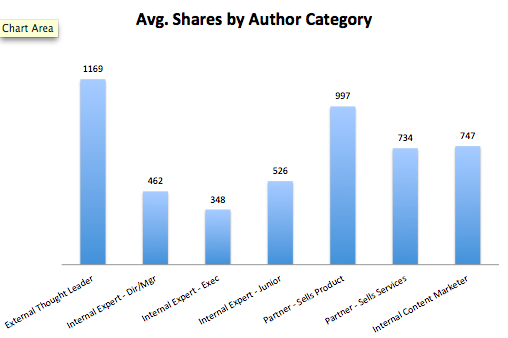
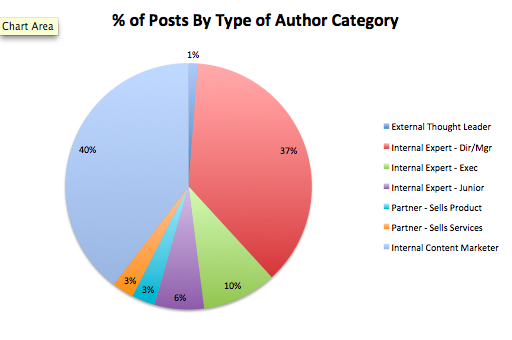
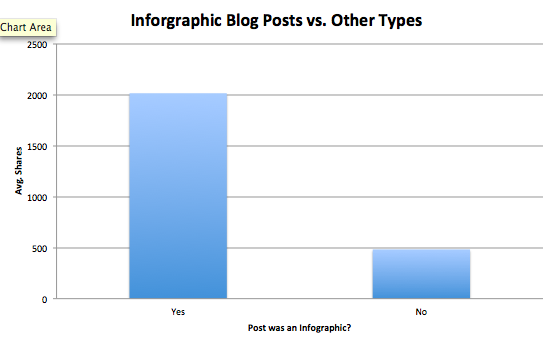
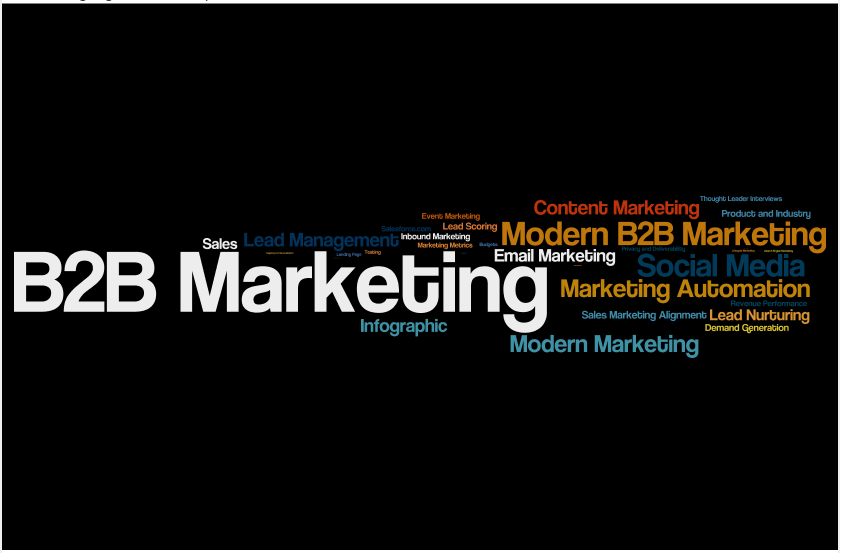
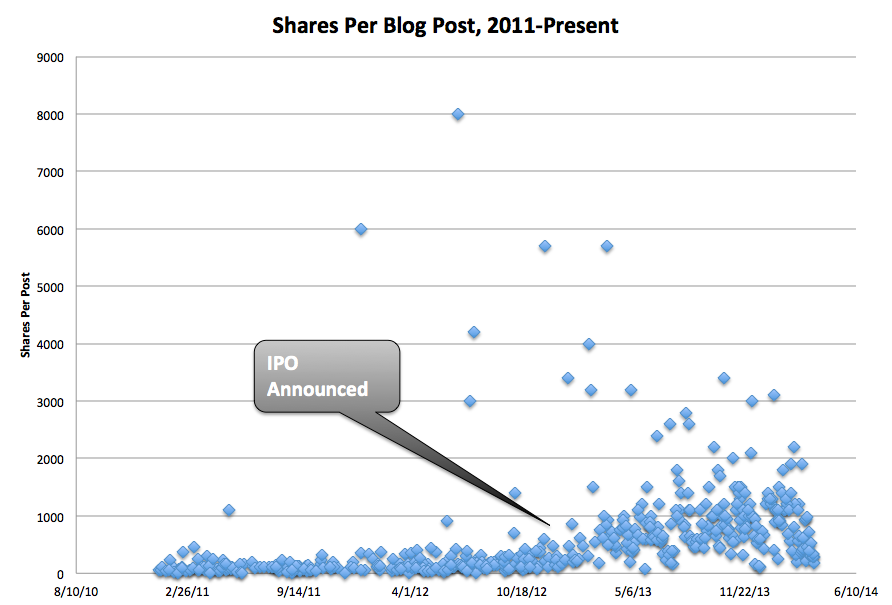

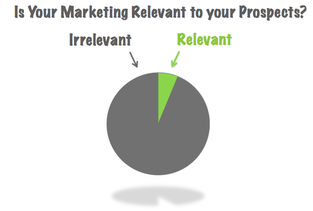

 RSS Feed
RSS Feed